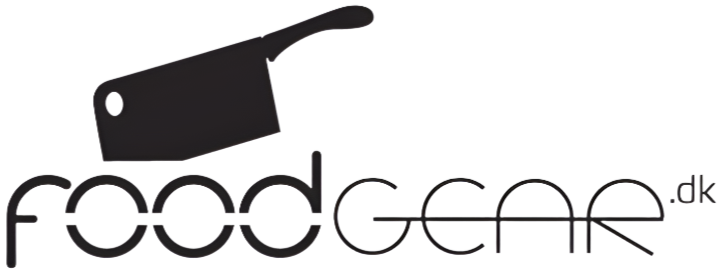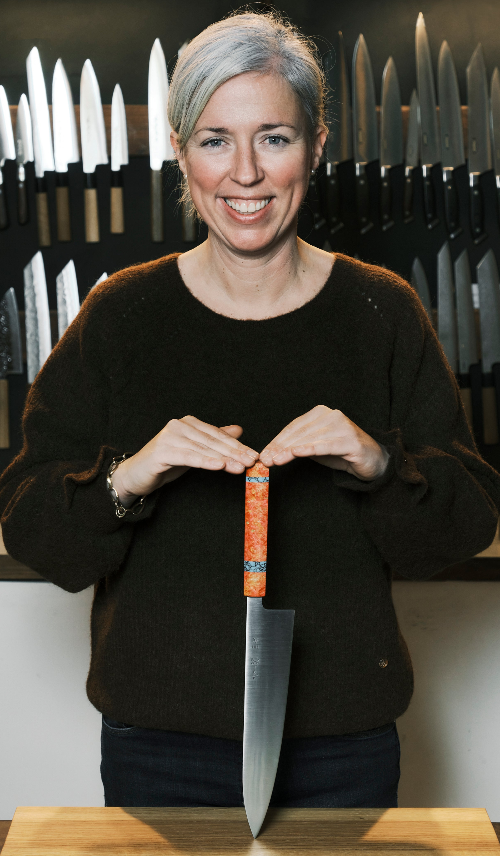A visit to K Sabatier

It is 8:00 a.m. and we are in Thiers in the south of France. We have been driving in rainy darkness all morning on a boring French motorway - although with an apparently adventurous horizon behind the darkness.
When we arrive in Thiers along a small country road on the side of a mountain, it starts to lighten up and we can see an old, dilapidated building that could look like something from a 70s horror movie - not exactly a pretty sight in the gray morning light. Our GPS beeps and our destination is just ahead.
It is the meeting place with Philippe Bournilhas, 8th generation of the original Sabatier family - that is, K-Sabatier. At that time, we are adamant that we must meet him at their factory. To our great surprise, we see a small, very narrow gate, just above which is a sign that says: 'coutellerie K-Sabatier aine e perrier exportation'. We drive in through the narrow gate and park the car in an incredibly beautiful yard, located between a rustic building from something that looks like the 15th century.
An iron gate is opened behind us, and out comes a small French woman with shoulder-length dark hair and her little brown cottonmouth dog on her arm. Surprised by the welcoming committee, we shake her hand and introduce ourselves. She shows us through the gate and into the house through a stunningly beautiful courtyard. We are politely ushered into a living room, which now once again resembles a strong reminiscence of the upper class living rooms of the Renaissance. We are offered coffee and sit down in the living room. It turns out that the house we are sitting in is actually the old workshop from when K-Sabatier started and has been in the family all their lives. Christine, Philippe's sister, who welcomed us, tells us that she and her brother grew up in the house - of course to the sound of hammers and grinding machines, she says with a French charm.
Christine says that Philippe has just taken the children to the nearby school and that he will probably be back soon.
We are taken through the day's program and before long Philippe is home. Philippe is a slim, very well-dressed man who possesses the French subtle restraint.
We quickly tackle the first visit of the day - the steel factory. By the way, it turned out to be more than we had expected.

The steel factory is a massive building out on Lars Tyndskid's fields. It took us about half an hour to get there from Thiers, and from the outside it's not a very impressive place. Inside, it's a completely different story. We are introduced to the site's foreman, and are led by him into a surprisingly large hall, in which are placed nothing less than four gigantic pressure hammers and a gigantic shelving system filled with what they call 'toolings' - a very thick block of steel, in which with oil and water in another machine, a shape is cut for each individual knife and tools. The noise is enormous, the heat is high and the smell is bad, so it was a quick review of the large room. When we get out, the foreman tells us about an ancient tradition, according to which they still make their products. It is the tradition left from the time when the farmers had no work on their farms, and therefore offered themselves as grinders, polishers, fitters of handles, etc. They were also an important link in the growth of K-Sabatier. When K-Sabatier specialized in kitchen knives in 1810, the demand increased enormously, and if they had not had the labor of the farmers, they probably would not have been able to keep up with this demand. This also gave them something to do in the winter, and it ensured for K Sabatier that the work was done in the surrounding villages - of course with an outlet in Thiers, which is also one of the deep traditions of this Mecca of knives. So the incredible local patriotism the people from Thiers and the surrounding area possess.
The next stop was the place where these now very raw blades had to be hardened. It takes place in a significantly smaller workshop than the previous one.
When we drive onto the dirt road that should lead to the workshop and park the car, Christine giggles a little at the not-so-gentle parking, we meet a small man, with a good firm handshake and the charm of a typical French craftsman.
It doesn't necessarily take a sharp eye to see that Christine and the little man know each other quite well. They joke and puff at each other a bit before we enter another noisy room with countless belt sanders, two big aces and an oven for tempering.
This was probably one of the most surprising visits where pride in good craftsmanship really came through. We are told that after hardening the so-called carbon steel knives, they shock-cool the knives in oil. This process causes the blade to bend slightly, which means that it must of course be straightened. He sits down, to our great surprise, over to an arm bolt, takes 4-5 knives in his hand, finds the hammer and starts tapping on one of the blades. After three precise strikes, he raises the knife to his eye and inspects his change. He turns to Christine, says something with a sly smile on his face and makes her giggle again. 'Eye of the master' Christine then says to us, still smiling. We stand completely in awe of this joint in the grand scheme of things. What a passion that time is taken for each individual knife to tap it by hand. This is just another relic from the old days when craftsmanship was of greater necessity.

Next, we had to visit the place where the sharpening of the blade itself is done.
After a short half-hour drive through the adventurous French mountain landscape, we should find ourselves at the top of a mountainside. We are greeted by a very large gentleman, with large black hands hardened by the passage of time in the workshop. He is obviously the son of the foreman we were to meet later. Inside a small room out back, we find his father sitting at some kind of machine - a machine called the witch. The machine consists of two leather wheels with a certain diameter, which both run towards each other. The purpose is to 'clean' the blades of any metal residues and at the same time begin the finished polishing.
This grinding shop is now operating on its third generation, and as the father just said, the witch is retiring with him - in favor of more automatic and precise machines.
K-Sabatier is the shining example of the local patriotism that the small villages in the south of France possess. Nothing is produced outside the borders of the region, everything is as far as possible made by hand and everything is carefully thought out down to the smallest detail.
The knives don't come in boxes, because as Philippe says; we sell knives and not packaging, that makes the knives more expensive and there is no reason for that. Instead, there are leather sheaths hand-stitched by one of his family members.
The result of this passion and respect is the well-known knife that most people love and care about. The respect and passion for the craft is still alive and well in France's knife mecca.
We can proudly present K-Sabatier as part of Foodgear's range.



Leave a comment
This site is protected by hCaptcha and the hCaptcha Privacy Policy and Terms of Service apply.